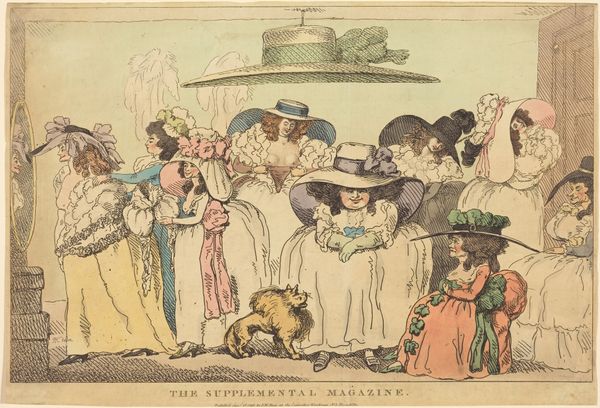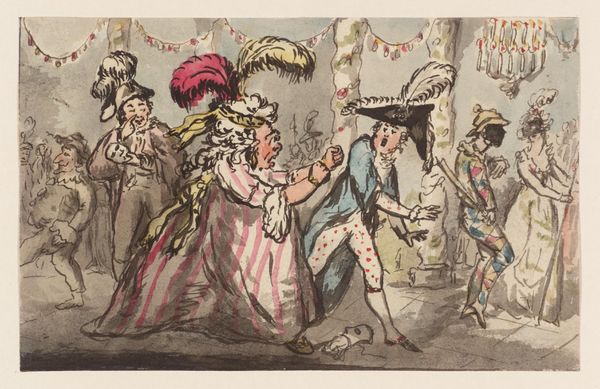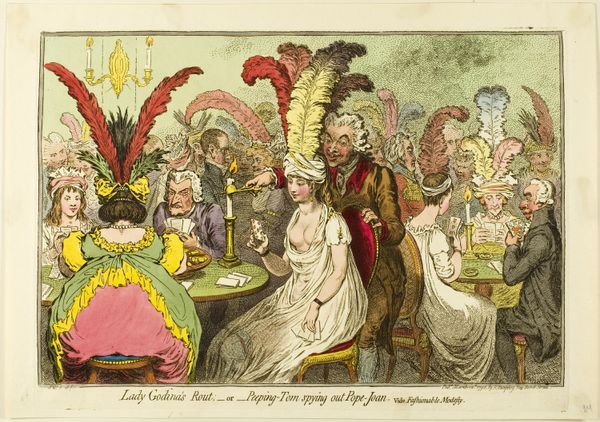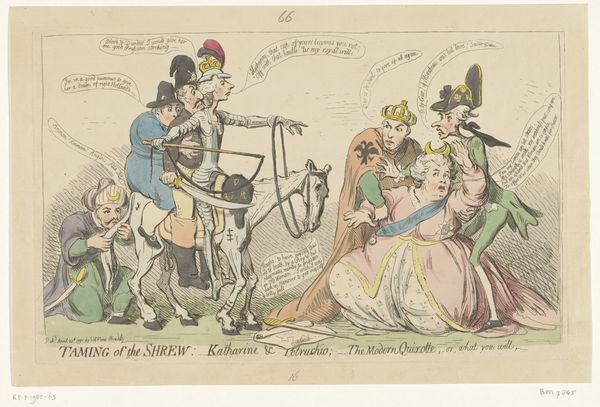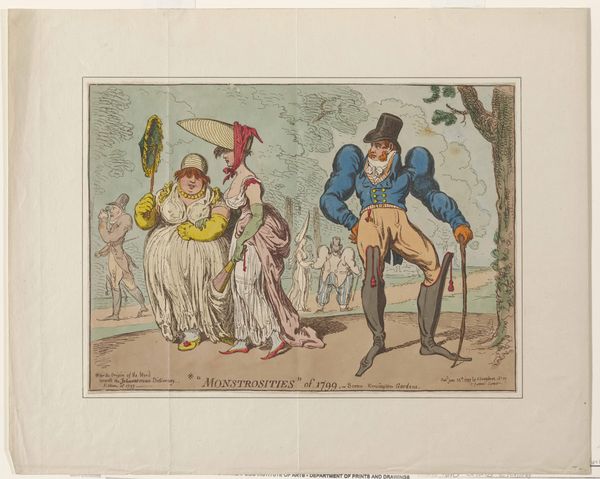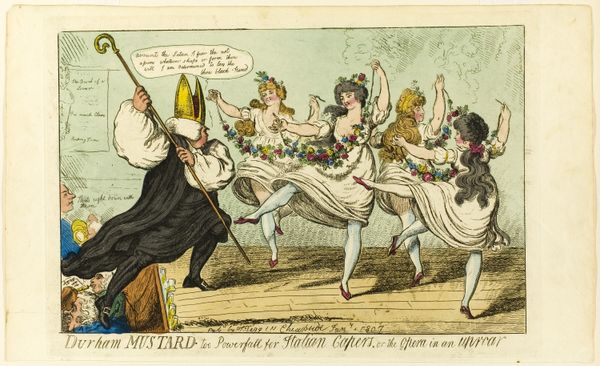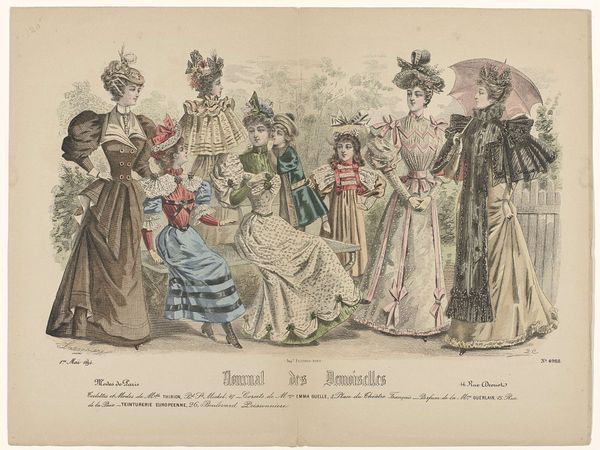
print, watercolor
# print
#
caricature
#
watercolor
#
romanticism
#
watercolour illustration
#
genre-painting
Dimensions: height 223 mm, width 330 mm
Copyright: Rijks Museum: Open Domain
Curator: Looking at "Monstrosities of 1819 & 1820, 29 novembre 1819" by George Cruikshank, currently housed in the Rijksmuseum, I’m immediately struck by the exaggerated styles and bustling social scene it presents. Editor: My immediate impression is one of satire and social critique. The title gives it away, really – these "monstrosities" seem to point towards the absurdities of high society at the time. What symbols of power do you notice here? Curator: Certainly, sartorial choices stand out. Towering hats, immense frills, exaggerated military garb... each article proclaims status, wealth, and an adherence to trends that defy practical considerations. It reflects how identity was communicated visually, but also how vulnerable people were to critique through appearance. Editor: Exactly. Fashion as performance, but a performance easily mocked. Look at the rigidity of posture in many figures – they’re literally straining under the weight of expectation and appearance. What I see here is a microcosm of the widening gap between the elite and everyone else in post-Napoleonic Europe. Curator: And the way Cruikshank uses watercolour is brilliant; he subtly highlights and mocks specific fashions of the era with delicate brushstrokes, giving grotesque imagery an ethereal feel, connecting contemporary ideals of beauty to this… monstrous image. Editor: He's also reflecting the shift in power structures. You’ve got the old guard holding onto powdered wigs and elaborate costumes alongside newly moneyed figures awkwardly adapting to aristocratic styles. Cruikshank uses the grotesque to comment on social upheaval in such a potent way, doesn’t he? It resonates with our current moment, where social media obsesses over appearances but the social divides persist. Curator: Yes, while rooted in early 19th-century anxieties, these 'monstrosities' tap into enduring fears of societal change and cultural distortion. Editor: Thinking about this today, this image provokes a discussion on consumerism, class, and the commodification of the self through style. These anxieties remain acutely present, even two centuries later. Curator: Indeed. The artist’s sharp eye reminds us how symbols, particularly visual ones, continue to reveal timeless tensions.
Comments
No comments
Be the first to comment and join the conversation on the ultimate creative platform.

